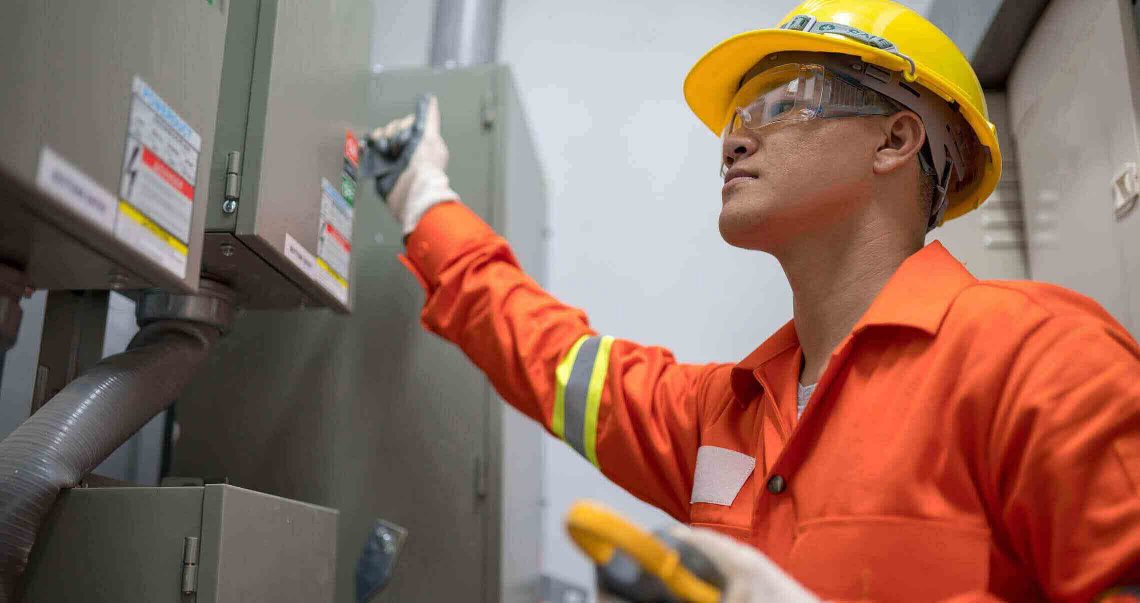An Electrician Safety Check: How to Protect Your Employees
By its very nature, electrical work can be hazardous. The good news is that fatal injuries decreased in 2020 compared to the prior year, according to the latest Electrical Safety Foundation International report. However, approximately 2,220 nonfatal injuries—an increase of 17%—resulted in subsequent days away from work.

To address the inherent job risks, businesses employing electrical workers should consider conducting a periodic electrician safety check to make sure the proper precautions are in place and working as intended. It may save your business more than money.
Knowing the risks of electrical work
Accidents or injuries related to electrical work can occur anywhere, whether inside private residences, factories or even during power line repairs. Construction sites in particular pose many hazards from electrical work.
According to the Occupational Safety and Health Administration, or OSHA, some of the most frequent causes of electrical injuries reported on construction sites include:
- Inadvertent contact with power lines
- Improper grounding of equipment or lack of ground-fault protection related to insulation breaks, live wires or short circuits
- Improper use of equipment or extension cords
OSHA also notes that electricians may suffer from ergonomic injuries, such as muscle strain or muscle fatigue due to frequent bending or lifting heavy equipment.
Any identified safety issues
Prior to the beginning of each job, a hazard assessment should be completed to identify injury risks. A checklist can be used to document the findings. Any safety issues identified should be communicated to workers, along with the appropriate actions they need to take—such as wearing personal protective equipment, or PPE, to reduce risks and avoid accidental injury. Hazard assessments should be based on current industry standards and individual state safety requirements. It's also good to remember that unsafe companies may also face legal risks and the costs of litigation.
Promoting electrical safety in the workplace
A safer work environment can be a competitive advantage when businesses are looking to hire electrical workers in a tight job market. Using a wide range of protective safety equipment can also bring down the cost of insurance premiums. From basic PPE to the latest energy-sensing technology, businesses should evaluate the options that will provide the best protection based on the type and location of work performed.
Electrical businesses will need to provide workers with the necessary equipment to enhance on-the-job safety. Include the following in your electrician safety check.
- PPE: This personal equipment is a necessity when working around live wires. Items such as rubber gloves, fire-retardant clothing, face shields, hard hats, proper footwear and safety glasses will create a barrier around workers and prevent them from accidental shocks or other injuries.
- Wristbands: Energy-sensing wristbands can be worn by workers in close proximity to electrical equipment. The wristbands will alert an electrician when they're near energized equipment and can prevent accidents.
- Insulating protective equipment: This includes any protective items that are not worn on the body, such as rubber hoses, blankets and insulating barriers that protect workers from contact with energized equipment.
- Tracking and communication software: This type of software lets workers report potential hazards when discovered on a job site and prevents others from coming in contact with live equipment. A centralized tracking system also allows companies to report and analyze near misses or other unforeseen events to take future action and prevent safety breakdowns.
If new safety tools are required to address electrical risks, consider financing an equipment lease or purchase with a loan or line of credit. By investing in communications software, safety equipment and employee training, electrical companies will benefit in the long run through lower worker absenteeism. In the end, it's clear that workplace safety and proper training are essential for organizational success.




